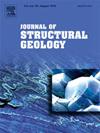断层过程的热年代学和磁学研究进展
IF 2.9
2区 地球科学
Q2 GEOSCIENCES, MULTIDISCIPLINARY
引用次数: 0
摘要
这本特别的书介绍了最近在使用热年代学和岩石磁性来推进我们对断裂过程的理解的进展,整合了来自不同构造环境的见解。热年代学,特别是低温系统,如(U-Th)/He、裂变径迹和氩定年,限制了断层起始、滑动和再激活的时间,揭示了变形、挖掘和地表过程之间的联系。磁性方法,包括磁化率的各向异性和非滞后剩余磁化的各向异性,是检测摩擦加热、化学蚀变和应变局部化引起的矿物学转变的灵敏、非破坏性工具。总之,这些方法在多个空间和时间尺度上捕捉了断裂带的热、构造和流体相关演化。该卷摘自2023年美国地球物理联合会年会上提交的论文,包括对青藏高原、比利牛斯山脉以及以色列和意大利的发震碳酸盐岩断层的研究。这七个贡献突出了构造地质学、地质年代学和岩石物理学在破译断裂带历史和动态弱化过程中的整合。总的来说,本书证明了多学科方法在评估地震灾害和重建地球地壳变形史方面日益重要。本文章由计算机程序翻译,如有差异,请以英文原文为准。
Thermochronological and magnetic advances on faulting processes: An introduction
This special volume presents recent advances in the use of thermochronology and rock magnetism to advance our understanding of faulting processes, integrating insights from diverse tectonic settings. Thermochronology, particularly low-temperature systems such as (U-Th)/He, fission tracks and argon dating, constrains the timing of fault initiation, slip, and reactivation, revealing links between deformation, exhumation, and surface processes. Magnetic methods, including anisotropy of magnetic susceptibility and anisotropy of anhysteretic remanent magnetization, serve as sensitive, non-destructive tools to detect mineralogical transformations caused by frictional heating, chemical alteration, and strain localization. Together, these approaches capture the thermal, structural, and fluid-related evolution of fault zones at multiple spatial and temporal scales. The volume draws from contributions presented at the 2023 American Geophysical Union Annual Meeting and includes studies on the Tibetan Plateau, the Pyrenees, and seismogenic carbonate faults in Israel and Italy. These seven contributions highlight the integration of structural geology, geochronology, and rock physics in deciphering fault zone histories and dynamic weakening processes. Collectively, the volume demonstrates the growing importance of multidisciplinary approaches in assessing seismic hazards and reconstructing Earth's crustal deformation history.
求助全文
通过发布文献求助,成功后即可免费获取论文全文。
去求助
来源期刊

Journal of Structural Geology
地学-地球科学综合
CiteScore
6.00
自引率
19.40%
发文量
192
审稿时长
15.7 weeks
期刊介绍:
The Journal of Structural Geology publishes process-oriented investigations about structural geology using appropriate combinations of analog and digital field data, seismic reflection data, satellite-derived data, geometric analysis, kinematic analysis, laboratory experiments, computer visualizations, and analogue or numerical modelling on all scales. Contributions are encouraged to draw perspectives from rheology, rock mechanics, geophysics,metamorphism, sedimentology, petroleum geology, economic geology, geodynamics, planetary geology, tectonics and neotectonics to provide a more powerful understanding of deformation processes and systems. Given the visual nature of the discipline, supplementary materials that portray the data and analysis in 3-D or quasi 3-D manners, including the use of videos, and/or graphical abstracts can significantly strengthen the impact of contributions.
 求助内容:
求助内容: 应助结果提醒方式:
应助结果提醒方式:


